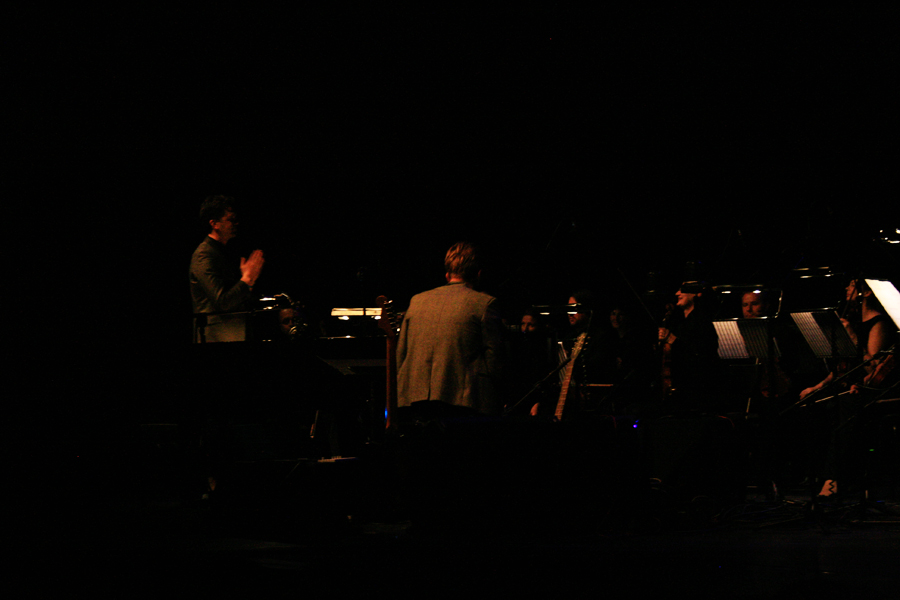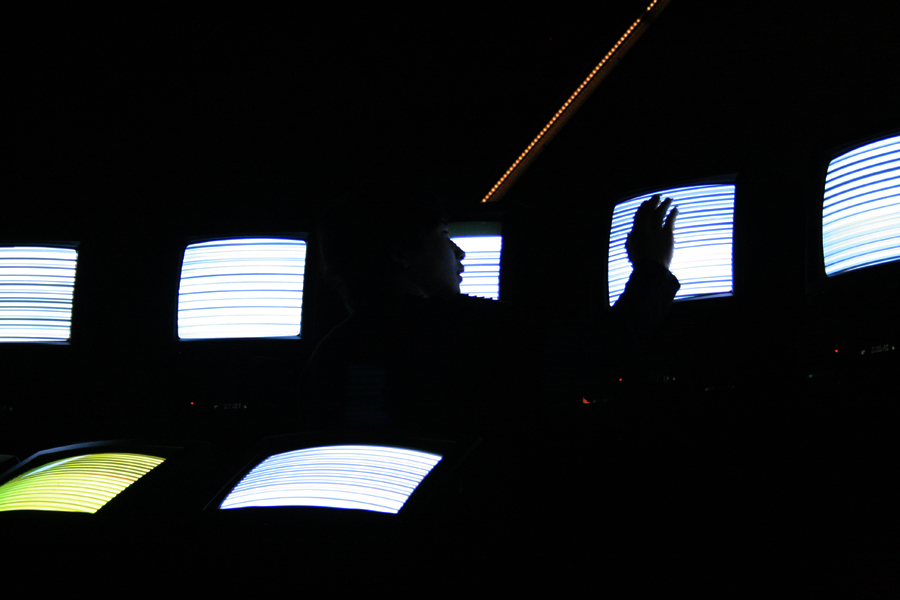Music for Solaris
By Mario Elgazzar & Jeroen Feenstra
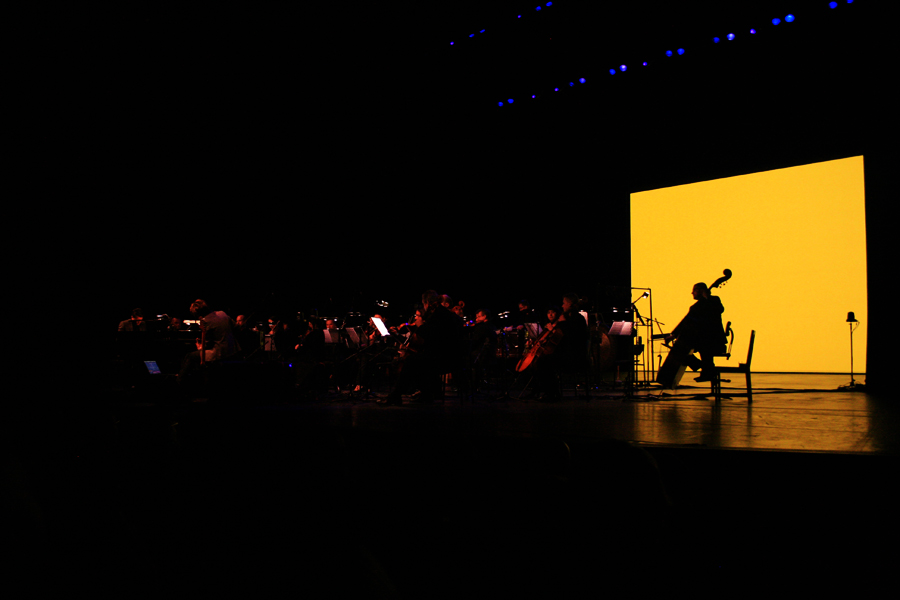
A few students of MediaLAB Amsterdam visited TodaysArt Festival 2012 on Friday the 21st of September and arrived at the entrance of the Lucent Danstheater, after getting our tickets we went to see a musical piece by Ben Frost, Daníel Bjarnason and Sinfonietta Cracovia. Director Olof van Winden opened the ceremony by explaining what TodaysArt is about, he did that with the support of his team, which he called on stage. He explained how TodaysArt is held in an urban setting and focuses on discovering the undiscovered. After that the orchestra starts to assemble, you can hear a few musicians tuning their instruments. They seem to wait for a little while because a member of the orchestra was arriving a bit later than expected. They’re going to perform Music for Solaris and it starts off quietly and simple, after the other musicians started to play the whole experience changed. The musical play sounds eery, almost as if you’re watching a scene in thriller movie. Its theme is dark and violent. Soon the projector is starting to show an image, first it’s shapes and after a while we can see that it’s a person. The orchestra reaches a peak that makes my hairs on the back of my neck stand up. The bass is so intense that I can feel it through my body. As the image starts to shape-shift into a woman that’s smiling deviously I notice that the play is calm again. After a few iterations of peaks and declines, the sound of the violins are louder than any other, slowly you can hear other instruments overtaking it. The bass is really intense now, it almost shakes my out of my chair. After the biggest peak it starts to get calm again and I can see the pianist leading out. He puts his hands together like a chinese greeting and starts bowing to the orchestra. It’s done and the round of applause was extraordinary.
Braun Tube Jazz Band
By Takuma Oami
We went outside to go to the Theater aan het Spui, to attend a interesting musical piece by Braun Tube Jazz Band. There are a lot of televisions showing the white noise you used to get if a channel was off the air or your television broke. When Ei Wada touches the television screen it generates a sound. The tones vary depending on the video tape used to create the white noise effect. The sounds is being generated from the static electricity he’s receiving from the television screens. To explain this concept I have the following example: When you are strumming a snare on a guitar the pick-up registers the vibrations and translates that to a sound. This is the same principle Ei Wada is using. He becomes the “pick-up”.
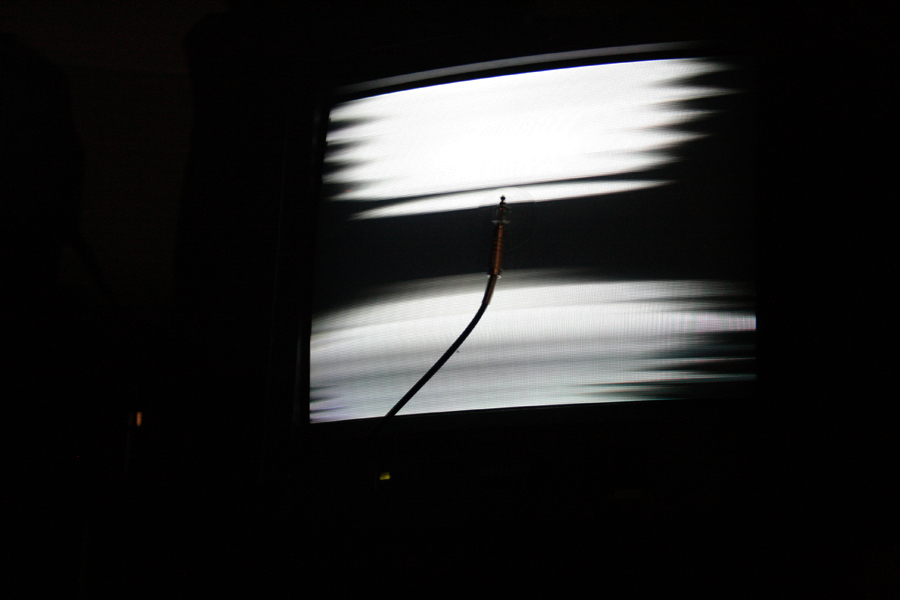
CINECHINE
By Sanne van Wegberg
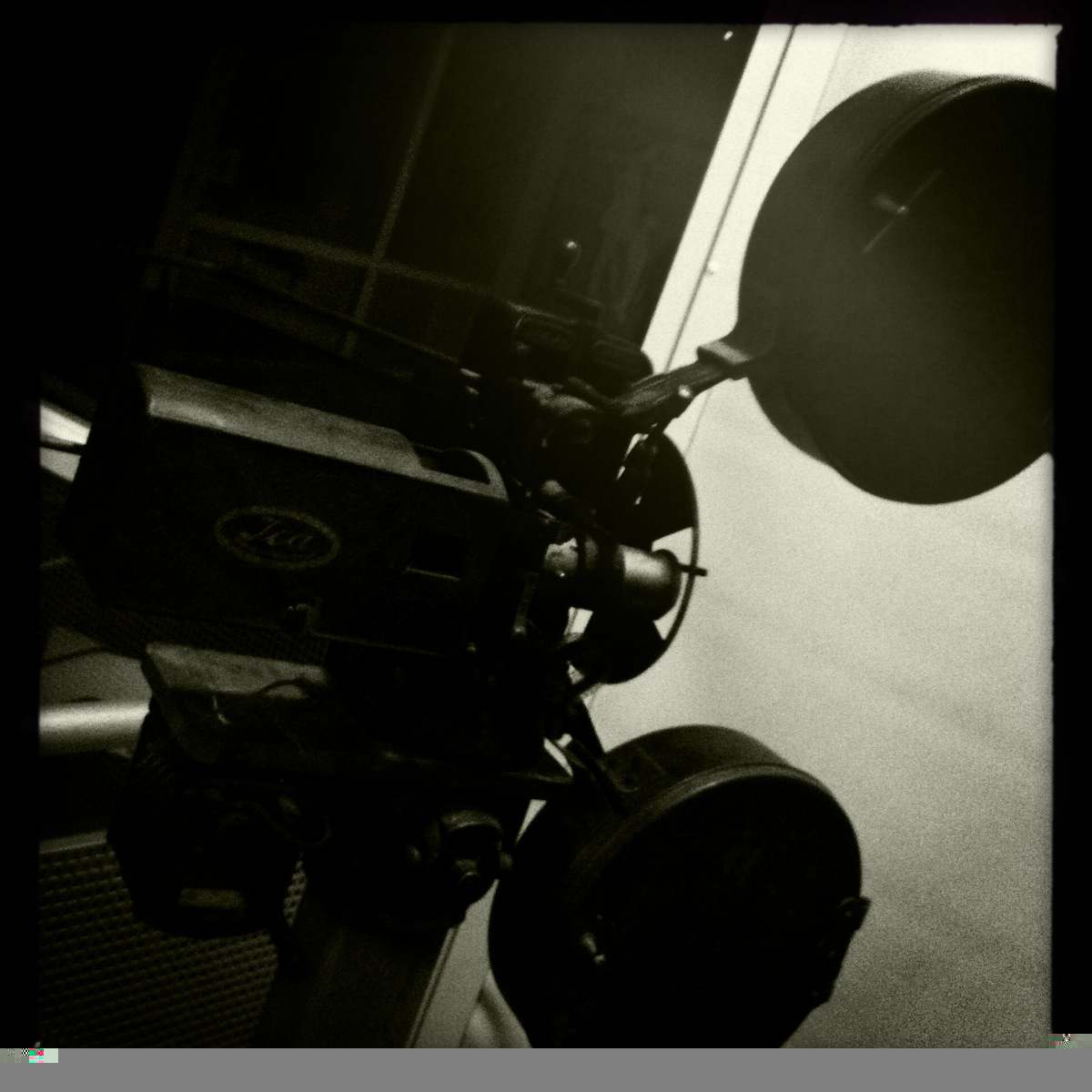
After the mind blasting tunes of Ei Wada we went to the Filmhuis where Mariska de Groot, surprised us with her installations of fans, lights and surrealistic sounds. CINECHINE was an interesting experience. We felt excited as we walked up the stairs. We were halted by a volunteer that told us to wait for the current group to leave. A girl that was waiting in front of us thought it was a haunted house, thankfully she didn’t scream because once we walked through the black curtains we entered a dark room. At first I was confused because I couldn’t see or hear anything. We were getting a little impatient and started to explore the room, we almost stumbled over some equipment but everything went well after that. A little light started to appear. After a while the volunteer was looking through the curtain and told us to move, because the installation doesn’t work without any movement. This made us do a little exercise that activated a lot of installations like: propellers, lights and other devices that made sounds. We heard whistles, snores and rattles. Combined with the lights it made a surreal experience, it was as if we had a play room full of industrial objects and sounds. It had a harmonious purpose, especially with the lights and sounds.


